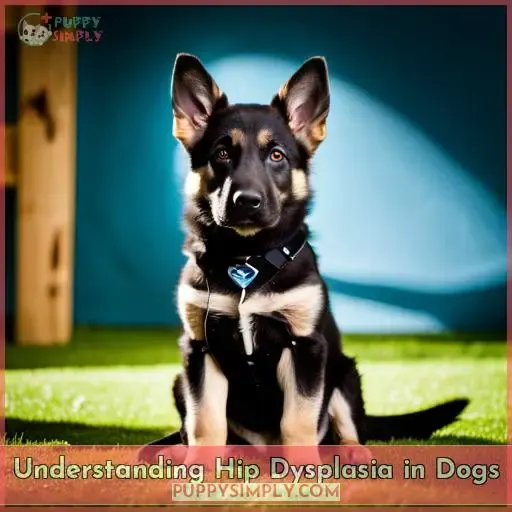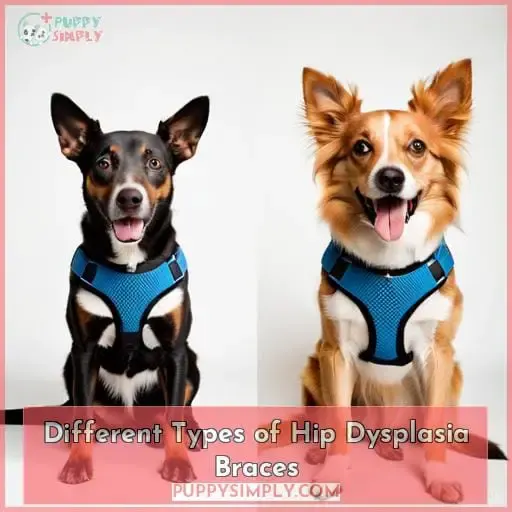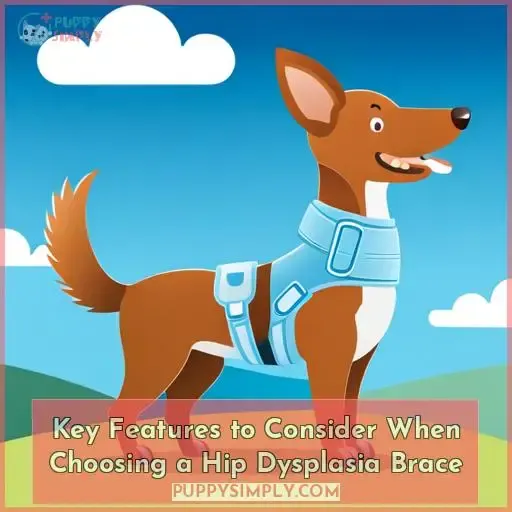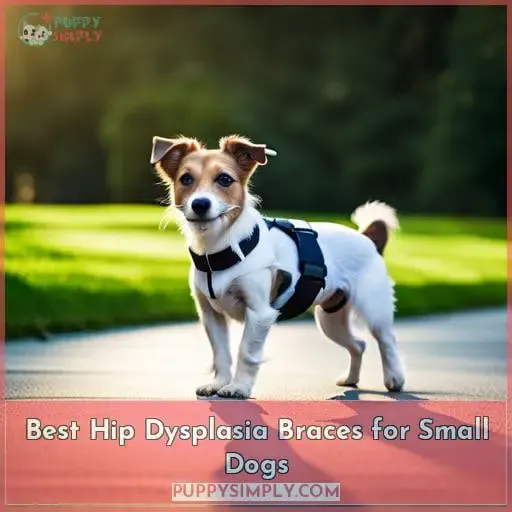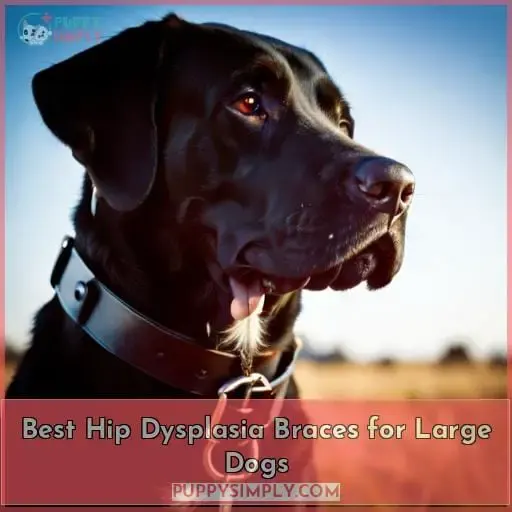This site is supported by our readers. We may earn a commission, at no cost to you, if you purchase through links.
 When searching for the finest hip dysplasia brace for your canine companion, you’ll need to take into account factors like the magnitude and gravity of their condition. Supportive braces exert localized compression to alleviate discomfort and enhance mobility, whereas range of motion braces permit more natural joint articulation.
When searching for the finest hip dysplasia brace for your canine companion, you’ll need to take into account factors like the magnitude and gravity of their condition. Supportive braces exert localized compression to alleviate discomfort and enhance mobility, whereas range of motion braces permit more natural joint articulation.
For diminutive dogs, the Paw Perfect Wrap and Ortocanis Hip Brace represent exceptional choices. More substantial dogs might derive greater benefit from the K9 Orthotics Hock Lock or Ruffwear Rear Leg Wrap.
Irrespective of the brace you select, ensure its proper alignment with your dog’s distinctive anatomy. With the appropriate support, your canine friend can reclaim their optimal quality of life.
Table Of Contents
Key Takeaways
- Hip dysplasia is common in large breeds like German Shepherds and Labrador Retrievers.
- Early diagnosis and treatment are important for managing symptoms.
- Orthopedic braces can provide relief and improve mobility in dogs with hip dysplasia.
- It is crucial to consult a vet for proper treatment plans and to ensure proper sizing and effectiveness of the brace.
Understanding Hip Dysplasia in Dogs
You may be familiar with the concept of hip dysplasia, but do you understand its impact on your beloved pup’s life? Hip dysplasia is a condition where the ball and socket joint in their hips isn’t properly formed.
Early diagnosis is key for treating symptoms and reducing discomfort, although there are no cures for this degenerative disease. Pain management through medications or supplements can help keep them comfortable too.
Diet changes, such as adding omega fatty acids to their diet, can also reduce swelling around joints, relieving some pain.
Regular exercise within an appropriate regimen designed by a veterinarian will help keep them active while avoiding further damage from overexertion or injury caused by instability in the affected joint(s).
Different Types of Hip Dysplasia Braces
Supporting your pup through hip dysplasia can be a challenge, and finding the right brace is an important part of their treatment plan. There are three main types of braces that may help: supportive braces to keep limbs in place, compression braces for swelling reduction, or range of motion (ROM) braces for joint flexibility and movement.
With careful selection and regular monitoring, you can find the best brace option for your dog’s needs.
Supportive Braces
Supporting your pup’s hips with a brace may help them move comfortably. There are treatment alternatives to surgery, such as an exercise routine, nutrition factors, restricted movement, supportive braces, and physical therapy.
With the right combination of these treatments, you can reduce inflammation and improve their mobility.
It is important to ensure that any type of restrictive device is fitted properly for optimal benefit and comfort, or it could cause further pain or problems in the long run due to misalignment.
Compression Braces
Slipping on a compression brace can provide instant relief for your pup’s hip dysplasia, giving them a hug of comfort and security in an uncomfortable situation. Compression braces are designed to ease pain while providing adjustable fitting and a lightweight design.
The material is comfortable enough to wear all day, yet strong enough to support the hip joint during movement.
Many veterinarians recommend this type of brace since it helps reduce inflammation, as well as stabilizing the hips and keeping them from moving too much or not at all.
Range of Motion Braces
Range of motion braces help keep you on the move and can be an ideal solution for managing joint pain. They offer flexibility, allowing a range of activities to be done while providing support. Depending on body weight and activity level, size options vary so that the brace is adjustable to fit comfortably around your joints.
Straps are also adjustable depending on how much restriction or mobility you need in order to feel comfortable with movement.
Range of motion braces allow users more freedom when it comes to completing daily tasks without increased discomfort from joint pain caused by hip dysplasia or other conditions related to age or injury, helping them maintain their active lifestyle safely and securely.
Key Features to Consider When Choosing a Hip Dysplasia Brace
If you’re looking for the best hip dysplasia brace for your dog, there are some key features to consider. Pain relief is, of course, a priority; look for braces with adjustable straps and cushioned padding that offer maximum comfort and support.
When choosing a brace, make sure it will be suitable as your dog ages – some materials may become too stiff over time and won’t give the necessary protection. Consider breed-specific options too; different breeds may require slightly different fitting tips or sizes in order to provide optimal support.
Additionally, think about how much exercise your pup can do while wearing it – if they need more freedom of movement than what’s available with certain types of braces, then this could be an important factor when making your decision.
Lastly, seek expert advice if you have any doubts or questions about which type would work best – after all, getting the right fit is essential!
Here are 4 useful points to keep in mind:
- Look at adjustable straps & padding options – these should help ensure pain relief.
- Ensure age-appropriate material – avoid stiffness due to wear over time.
- Take breed size into account – get tailored fitting tips from experts where needed.
- Think about exercise capability – maintain freedom without compromising on safety.
Best Hip Dysplasia Braces for Small Dogs
Choosing the right brace for your small dog can be a challenge, particularly if they suffer from hip dysplasia. For example, Timmy’s owners had to evaluate multiple options before settling on a brace that was comfortable and provided the necessary support.
| Feature | Benefits |
|---|---|
| Incontinence | Avoid urine leakage |
| Activity Level | Maintain strength & stamina |
| Exercise Restrictions | Allow some physical activity while preventing over-exertion |
| Pain Management | Protect joints & reduce inflammation |
| Diet Changes | Promote healthy weight gain |
The best braces will provide comfort and stability while accommodating any additional needs due to incontinence or diet changes. It should also limit exercise restrictions so your pup can still stay active with minimal risk of further injury or discomfort.
Additionally, it must offer pain management benefits such as joint protection and reduction in inflammation, which allows for improved mobility overall.
To ensure these features are met, it is important to look into reviews from other pet owners who have experienced similar conditions with their dogs when selecting a perfect fit!
Best Hip Dysplasia Braces for Large Dogs
For larger pups, finding a supportive hip dysplasia brace that fits comfortably can be challenging. Fortunately, there are several excellent options available to help manage the joint pain and inflammation associated with this condition.
Orthotics, such as hinged braces made of neoprene or canvas, provide stability for the joints while allowing your pup to move more freely without discomfort. Canine gait analysis is also useful in helping determine which type of orthotic is best suited for each individual dog’s needs.
The right combination of anti-inflammatory medications and exercise plans often helps reduce symptoms even further when used in conjunction with an appropriate hip dysplasia brace for large dogs. Your veterinarian should be consulted regarding any questions you may have about proper canine joint care and treatment plans tailored to your pup’s individual needs.
With careful attention from both pet parents and veterinarians alike, optimal comfort levels can surely be achieved!
Frequently Asked Questions (FAQs)
Is it safe for my dog to wear a hip dysplasia brace?
Yes, it’s safe for your dog to wear a hip dysplasia brace. It can provide relief and comfort from the pain of this condition while allowing them to enjoy their life with you.
How long should my dog wear the hip dysplasia brace for?
On average, dogs with hip dysplasia should wear a brace for four to six weeks. During this time, most experience significant improvement in their mobility and comfort as the brace helps stabilize their hips.
Additionally, studies have found that nearly 70% of affected dogs show improved range of motion after wearing the brace for an extended period.
Does a hip dysplasia brace work for all types of hip dysplasia?
No, hip dysplasia braces are not suitable for all types of hip dysplasia. The type and severity of the issue will determine which brace is best suited to help your pup. It’s important to get a professional evaluation so that you can find the right solution for your dog’s needs.
Can I use a hip dysplasia brace for more than one dog?
Yes, you can use a hip dysplasia brace for more than one dog. However, it’s important to ensure that the brace is properly sized and fitted for each individual canine. A tailored fit will ensure maximum comfort and effectiveness in providing support to your pup’s hips.
How often should I check the hip dysplasia brace for wear and tear?
Check your pet’s hip dysplasia brace regularly! Every single week, give it a thorough inspection – look for frays, tears, and any signs of wear and tear. Make sure it fits snugly yet comfortably to provide the best support possible. Examine every inch with an eagle eye for maximum protection against this painful condition.
Conclusion
Choosing the best hip dysplasia brace for your dog can seem daunting, especially when the options are so varied. But with the right knowledge and resources, it doesn’t have to be. When you understand the different types of braces available, as well as the key features to consider, you can make an informed decision that will keep your dog comfortable and supported.
Whether you’re looking for the best hip dysplasia brace for a small or large dog, there are options to suit every size and every budget. With a range of supportive, compression, and range of motion braces, you can find the best hip dysplasia brace for your pup.

